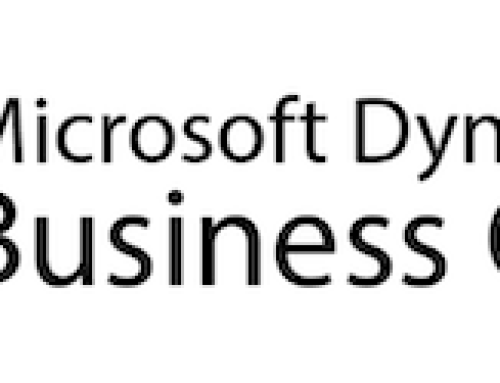What does it take to be a savvy seller in 2016? Be smart about social media; be open to apps; and offer your clients the best check out experience possible.
1) Get social
Many consumers prefer communicating via social media to other methods (e-mail, phone, or talking with a real person in a store). Once they have an audience, they’ll talk about their good, bad, and ugly experiences. One connected consumer can influence how others perceive your brand — for better or for worse.
But being social media savvy doesn’t just mean opening yourself to consumer opinions and whims. It means creating opportunity. According to the Epsilon Digital Shopping Tool Impact Study 2015, “a retailer’s social media activity has a greater impact on shoppers than the retailer’s website.” In other words, there are concrete benefits to actively engaging with fans via influential social media sites such as Facebook, Pinterest, Google+, and Twitter.
When you reach out to customers online, you create an element of surprise that “changes the dynamic between consumer and brand.” The Epsilon survey of 2,800 consumers reveals that retailers’ social network posts and pages top the list of the top five digital tools, with 35% of respondents saying they influence their consumption. Brands’ social network posts and pages are also important, with 33% of respondents responding to them. Other influential tools:
- Price comparison sites (35%)
- Shopping apps (34%)
- Product reviews (33%)
Social media today is about much more than product reviews; it’s about reaching out to — and engaging with — new and returning customers. Savvy sellers know this.
2) Get the app
Consumers increasingly rely on smartphones. PR Newswire reports that smartphones are used at every stage of the purchasing process: on the way to the store (50%); in the store (60%); and walking out of the store instead of making a purchase (39%).
According to Forrester Research, Inc., commerce on smartphones will total approximately $31 billion in 2016. But even with that impressive figure, many consumers will still head to the store. When they do, many will be armed with a shopping app, “the bridge between the virtual and real worlds of shopping” that will help them buy what they want so they can walk out with it in hand.
The most popular shopping apps are “those that belong to a specific retailer rather than a brand or third-party.” Consumers use them while they’re on their way to the store or are already on-site. They use them to find the information they’ve come to rely on when shopping online, such as price comparisons and ratings and reviews. “[T]he use of technology in-store can … dramatically increase the chance that they’ll purchase on the spot.”
If you’re still reluctant to get the app, consider these numbers: Alibaba, the mega-Chinese Internet seller, hosts an annual Singles’ Day shopping extravaganza every November 11 (the 11.11 Global Shopping Festival). In 2015, the event broke all sales records for a single day, with $14.3 billion in sales. The most pertinent take-away for sellers is that nearly 70% of sales were made on mobile devices.
Successful sellers in 2016 will creatively cater to the mobile crowd.
3) Get better at checkout
Consumers have found you and found what they want on your (real or virtual) shelves. Now treat them to the best check-out experience possible, with a variety of secure payment options, speedy delivery services, and an automated sales tax solution.
Payment options. No longer limited to credit or debit, payment options in 2016 will include EMV credit cards and a host of mobile wallets. Are you ready?
As of October 1, 2015, sellers in the United States are required to accept EMV (Europay Mastercard Visa) credit cards, long used in Europe and Canada, (gas stations aren’t required to replace the readers at pumps until 2017). Businesses that have not yet upgraded to EMV payment terminals may now be held liable for fraudulent action. Unfortunately, banks are struggling to replace old cards with new RIFD chip cards, and no financial institutions are expected to complete the transition by the end of the year.
Implementing new payment systems is likely to be most challenging for small- to mid-sized retailers. Yet retailers of all sizes are struggling with the fact that many software vendors are not ready for the transition. Some retailers have new chip-reading devices installed but can’t use them. They’re stuck in The Waiting Place.
In fact, it will take years before all retailers, credit card companies and banks fully make the transition to chipped credit cards, and even longer before the more secure chip-and-pin cards are the norm, as in Europe. By then, they could be trumped by alternative forms of payment such as Apple Pay and Google Wallet.
Mobile wallets. Amazon Payments. Apple Pay. Google Wallet. Samsung Pay. Square…. Security is improved with chip-and-pin cards. Getting rid of static numbers, as many mobile wallet options do, may be even more secure.
Forbes reports that mobile payments could top $720 billion annually by 2017. Business Insider forecasts that mobile payments will reach $808 billion by the end of 2019.
Savvy sellers in 2016 will have functioning chip-enabled readers, software, and POS systems in place to accept these and mobile wallet transactions, increasing security for both consumers and retailers.
Delivery. The keys to successful delivery in 2016 are speed and variety. Customers want what they want, when they want it. (If they don’t get it, they might pitch a fit).
The country (or at least the FAA) may not be quite ready to embrace delivery by drone, but delivery by private car or subway? Bring it on. And while consumers may not expect Amazonian-style delivery from all retailers, their expectations are in a state of flux and influenced by all existing options. If same-day delivery isn’t an option for you (as eBay discovered), are you prepared to offer same day in-store pick up? The more swiftly your customers get their purchases in hand, the better.
Accuracy. At the end of the order comes the moment of truth, when method of delivery is decided, the subtotal is presented, and sales tax is applied.
According to the Baymard Institute, more than 68% of online shopping carts are abandoned. More than 40% of online shoppers abandon shopping carts because of surprising hidden fees at check out. Unforeseen delivery fees can account for this. So can sales tax errors.
There are more than 12,000 taxing jurisdictions in the United States, and they aren’t based on ZIP codes. There are millions of taxability rules for products and services. Sales tax filing and remittance can be a full-time job.
There’s an easy solution: automated sales tax software like Avalara AvaTax, which offers:
- Address validation to ensure your deliveries end up on the right doorstep.
- Geocoding to generate rates with rooftop-level accuracy.
- Accurate, up-to-date product taxability rules to ensure that you tax what should be taxed and exempt what should be exempt.
- Integration to existing ERP and ecommerce systems for easier invoicing and streamlined compliance.
4) Get real about risk
Being a savvy seller also means putting safeguards in place to protect your business from costly risks that could negatively impact profits. Avalara’s Hidden Cost of Compliance whitepaper offers practical tips for reducing transactional risk in your business.
Repost from Avalara
















